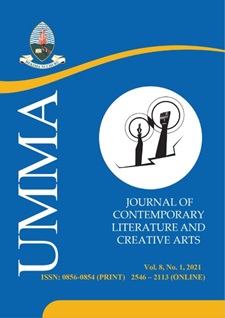Pornography or Cinematic Verisimilitude?
A Critical Examination of the Explicit Sexual Depictions in Neo-Nollywood Films
Abstract
This article critically examines the explicit sex scenes in neo-Nollywood films in light of the tension between cinematic realism and pornography boundaries. It probes whether such scenes serve an authentic narrative purpose, enhancing the realism and character depth of such a story, or run the risk of being gratuitous, sensational displays devoid of substance. The study adopted a qualitative research design with the descriptive method since the data involved are visual. Our arguments are framed by cognitive and psychoanalytical film theories. Three purposely selected films were artistically, culturally, and ethically analysed, focusing on the implications that the sensual portrayals have on audience perception, filmmaker intent, and cultural impact. It places the emerging aesthetic of Neo-Nollywood within the larger discourse of realism, cultural sensitivity, and audience expectation, all while problematising this demarcation point between art and obscenity within African cinema. Evidence shows that, with the recent shift in Nigerian cinema toward more courageous storylines and relaxed censorship, filmmakers have increasingly employed explicit content to depict intimacy and complex relationships. The study concluded that the Neo-Nollywood quest for global relevance must not be allowed to desecrate its moral obligation. Nigerian filmmakers have to chart a path that will marry verisimilitude with moderation, nurturing storylines that appeal both ethically and aesthetically.
Keywords:
Pornography, cinematic verisimilitude, sexual depictions, Neo-Nollywood, cultural sensitivity
Downloads
Published
Issue
Section
License
Copyright (c) 2024 Creative Commons

This work is licensed under a Creative Commons Attribution-NoDerivatives 4.0 International License.
- Authors retain copyright and grant the journal right of first publication with the work simultaneously licensed under a Creative Commons Attribution License that allows others to share the work with an acknowledgement of the work's authorship and initial publication in this journal.
- Authors are able to enter into separate, additional contractual arrangements for the non-exclusive distribution of the journal's published version of the work (e.g., post it to an institutional repository or publish it in a book), with an acknowledgement of its initial publication in this journal.
- Authors are permitted and encouraged to post their work online (e.g., in institutional repositories or on their website) prior to and during the submission process, as it can lead to productive exchanges, as well as earlier and greater citation of published work (See The Effect of Open Access).



